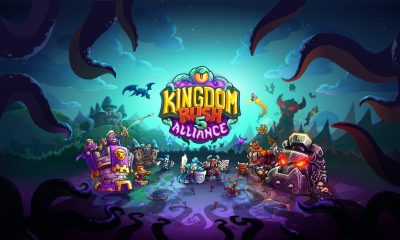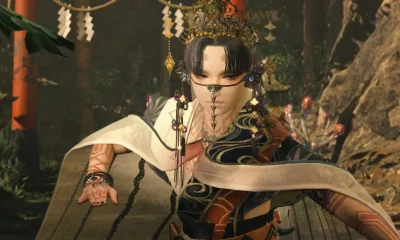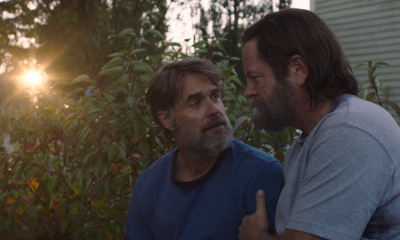
Analysis | Rise of the Ronin has good ideas undermined by boring open world
Follow Us @
Analysis | Rise of the Ronin has good ideas undermined by boring open world
Team Ninja games are known for punishing but extremely fluid and fun combat. Rise of the Ronin did not give up this DNA, but it brings many important new features and can be considered the studio's most ambitious step to date. Open world, difficulty selection and a link system between your protagonist and NPCs are the big news here, the highlights being positive and also, unfortunately, negative.
18th century Japan

The setting in Rise of the Ronin is very down to earth and differs significantly from Team Ninja's most recent games: Nioh and Wo Long. The campaign takes place during the late 18th century in Japan, with a strong focus on the history of the period and without blatant fantasy elements, such as monsters and magic.
With ships powered by coal and full of products to trade, Western countries such as the United States, England and the Netherlands have already established routes and influence in Japan, which is experiencing internal conflict in relation to this post-industrial revolution commercial opening. Inequalities are widening as nobles trade directly with foreigners, and diseases with no cure in the country, such as tuberculosis and cholera, arrived on foreign ships. In this hornet's nest are also the Ronin, samurai who live off outsourced work to survive in a world that increasingly needs them less.
Our protagonist, as the game already indicates, is a Ronin, but with a more robust past, from a clan that places its members with a partner called a twin blade. Inseparable duo unless it is to complete a given mission, where one sacrifices themselves for the other to escape. And the first interesting news comes right here. It is possible to create two twin blades that will be the most important characters in the game. The character creation system hasn't evolved much after Nioh 2, but it's still impressive and it took me a good few minutes to create in great detail a couple of middle-aged samurai that I imagined for this adventure.
Another new feature introduced here is the possibility of changing characters during missions, at first very linear as expected in recent Team Ninja games. At any time, you can switch to your partner and start combos and attacks. Along with the difficulty selection, which is divided into easy, medium and difficult, this mechanic makes Rise of the Ronin the studio's most accessible game, to the point that, normally, the game offers practically no huge challenge for those who have some experience. past with action games. Anyone who wants an experience more similar to Nioh, for example, can go straight to the highest difficulty.
From then on, the story invites you to make choices and explore a massive open world, divided by opposing regions and ideologies. On one side there is the pro-shogunate group, which wants to open up trade even further and suppress demonstrations against the process. On the other are rebels who want to overthrow the government and expel foreigners. Although it seems black and white from the description, the narrative relies surprisingly on gray morality and it is difficult to choose who to support at various moments in the story.
It's a shame that there is so much delay between the acts, and the campaign drags on with moments without much happening. Which ends up being ironic, since the important parts often seem too fast-paced and underdeveloped, with shallow dialogues that could be better worked on.
Focus on Characters

The game is vast, has more than one giant map and has dozens of characters to meet, each with their influence on the campaign, whether minor or major. Some evolve in very interesting ways, change their opinions and make us care about them. The side of the rebellious characters, for example, is very young and reckless, extremely radicalized and willing to go beyond any moral conduct to achieve their goals, including killing innocent people. But this disposition varies from character to character. Some will change their mentality and try to improve everyone's lives instead of ending everything, others will become even more radical and lost in their blind revolution. The same happens on the other side and, in the end, it is up to the player to choose whether to lean more towards one side, the other or stay neutral.
The interesting idea behind this proposal is the interaction with these characters. It is possible to talk to them at any time, give gifts and experience some unique moments with each of them, learning more about each one's motivation. Over time, several also undergo secondary missions and become options to choose from as partners in the campaign's other main missions. Intimacy levels are reached and this results in extra equipment, fighting styles and attribute points to improve your performance in combat.
The bad part of all this is that this dynamic doesn't always work. It is possible to create a romantic relationship with a character, for example, and a few missions later, see another say that he is in love with him and there is no option that takes your relationship with him into account. The same applies to pro or anti shogunate missions. Some characters are faced as mission bosses and soon after that they can be approached for a friendly conversation that does not take into account everything that has just happened.
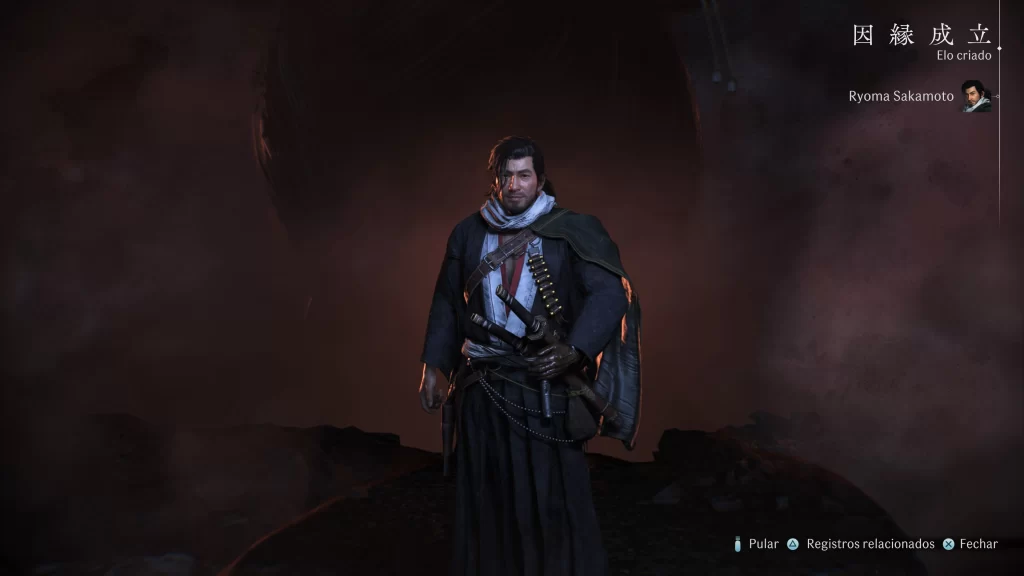
My feeling is that it's a cool idea, which is a big positive point of the game, but which fails so much in its execution that it ends up breaking the immersion more times than it should, thus becoming a negative point in several moments.
Tired and uninspired open world

If the story and characters at least have more ups than downs, the open world, on the other hand, stays much longer like the ugly duckling of Rise of the Ronin. Although it has a good variation in scenarios and an art direction that compensates for the not-so-detailed graphics and low-resolution textures, it really fails in terms of design, which is just another huge list of tiring and repetitive tasks.
You can see the inspiration from Ghost of Tsushima everywhere, but the execution manages to be even less inspired, with very silly activities. One of the collectibles are Cats, for example, but they are nothing more than the same model with different colors, always performing the same collection animation. Apart from a cat that runs if the player doesn't get down to capture it, all the others are static in places that are generally easy to reach and indicated on the map. The number of times the player does just this silly activity is simply 100 times. Yes, there are a hundred pussies on the map.
The rest of the points are better known to those who have been completing their to-do list since the PS3. Invading bases, for example, is another activity repeated dozens of times in each region. With little difference in enemies, it becomes even more tiring. It's about choosing to be stealthy or going head-to-head and killing everyone to free up the place. There is still the sanctuary that the player only prays to gain a skill point, fugitives to hunt that are just more repetition of combat and different treasures to open. There are dozens of hours spent doing the same activities, inflating a game that could be much smaller and more memorable, but which becomes a boring experience and that most players must put down before the end.

A compliment that must be given here is that the character's traversal across the map is very fluid. Both with the glider and on horseback, it is very easy to get anywhere, with few bugs and a lot of agility in movements. The horse's animation was heavily criticized on social media in the game's demonstration, but as far as the mechanics are concerned, it's perfect. There are no collisions with trees or rocks, it climbs well on all terrains and the movement works perfectly.
Combat is the highlight
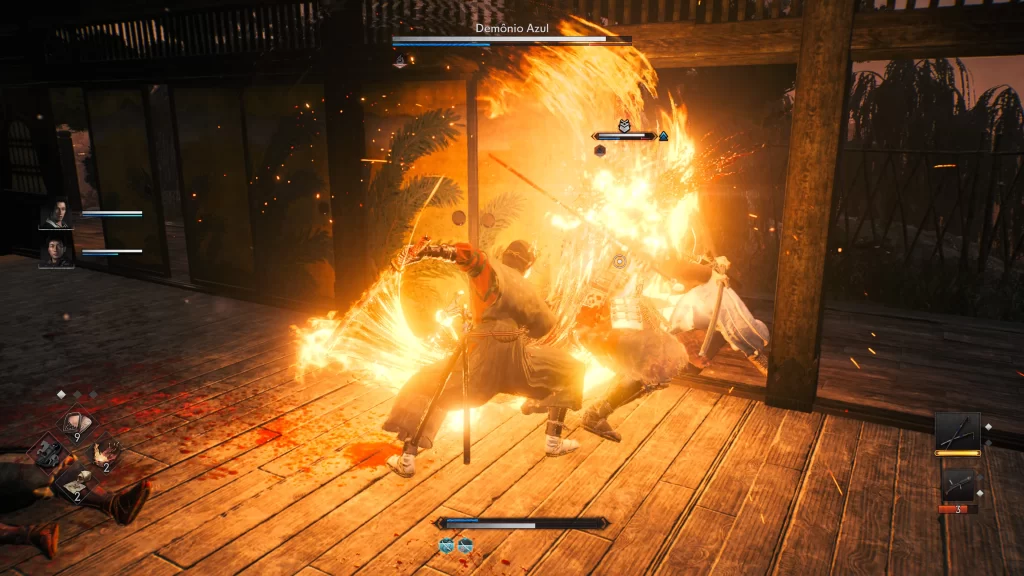
The combat comes last exactly because it is what is expected from Team Ninja. The dynamics are very similar to those of the studio's latest games, with the difference in the use of allies. Parrying blows here remains extremely fun and rewarding and the amount of items and equipment to shape your build is insane, giving you a lot of fresh air to keep fighting for hours, even with the exaggerated repetition proposed by the open world.
The bosses are unfortunately less memorable, with rare exceptions. There is nothing that resembles the giant bosses of Nioh, for example, and the fights are more focused on parrying at the right moment and choosing combat styles in the rock, paper, scissors dynamic to have an advantage against the enemy's stamina bar. .
The character's level progression and equipment is very different in Ronin. By completing activities and talking more with other characters, the player will earn points for specific skills in each attribute tree. That is, there is a tree with strength skills, another for dexterity, another for charm and so on. There are skills in these trees that can only be released with specific points of this type of attribute and there are skills that can be released with conventional points. This dynamic is really cool and allows you to explore less traditional choices of maximizing one attribute and forgetting about the others, for example. There are great strength skills that not even those who focus on dexterity weapons will give up, for example. Including social skills such as lying or intimidating in dialogue.

Weapons also have their own level and are improved not only at the blacksmith, but also with use during the game. At each level they make it easier for the player to break the opponent's guard, deal more damage or even charge the special bar. It's much more viable to change weapons here mid-journey than in other Team Ninja games and experimentation is rewarding.
For veterans, there is still the effects system for each weapon, which can be transferred from one to the other. Grinding to achieve the most beneficial effects, with the best benefit percentages for your weapons and armor is guaranteed and end-game content requires you to reach insane attributes to beat bosses.
Conclusion

Rise of the Ronin inserts Team Ninja's classic combat into the context of an open world and brings as icing on the cake the interaction between the protagonist and the various NPCs that bring the story to life. The game has its moments and good ideas, but the repetitive open world full of boring activities brings the experience down a lot, especially with the exaggerated length of the campaign that becomes boring after a few dozen hours.
Pros
- Traversing on horseback or gliding is fluid and fast through the open world
- Dynamic, fast and fun combat
- Very accessible for beginners
- Story loaded with gray morality and difficult decisions
- Customizing your Ronin
Cons
- Uninspired and repetitive open world
- Interaction between narrative and intimacy system with NPCs is messy
- Little variety of enemies between regions
- Unmemorable bosses
- Several shallow and poorly worked dialogues
Rating: 7.0/10.0
A copy of the game was provided by Sony for the preparation of this review
Analysis | Rise of the Ronin has good ideas undermined by boring open world
Follow AFRILATEST on Google News and receive alerts for the main news about Hot trending game, Anime, series, entertainment and lots more!
SHARE POST AND EARN REWARDS:
Join our Audience reward campaign and make money reading articles, shares, likes and comment >> Join reward Program
FIRST TIME REACTIONS:
Be the first to leave us a comment, down the comment section. click allow to follow this topic and get firsthand daily updates.
JOIN US ON OUR SOCIAL MEDIA: << FACEBOOK >> | << WHATSAPP >> | << TELEGRAM >> | << TWITTER >
#Analysis #Rise #Ronin #good #ideas #undermined #boring #open #world
-

 Fashion3 months ago
Fashion3 months agoVogue Arabia cover welcomes Salma Hayek in an interview with Penélope Cruz
-

 Football3 months ago
Football3 months agoVAR points out Diego Costa's offense against the fourth referee
-

 USA today entertainment3 months ago
USA today entertainment3 months agoBeyonce with the single “Break My Soul” leads on Spotify Brazil
-

 Health and Fitness3 months ago
Health and Fitness3 months agoVaccine against the reappearance of skin cancer enters final testing phase
-

 USA today entertainment3 months ago
USA today entertainment3 months agoSZA, Future and DJ Khaled come together in collaboration
-

 News3 months ago
News3 months agoParents of former player Waleswska are pressured by widower to pay rent for the house where they live
-

 USA today entertainment3 months ago
USA today entertainment3 months agoLarissa Luz and Linn da Quebrada enchant at the Multishow Awards with a tribute to Elza Soares.
-

 Good News TV series3 months ago
Good News TV series3 months agoThe shocking reason behind the decision not to show dead characters in The Last Of Us episode revealed














